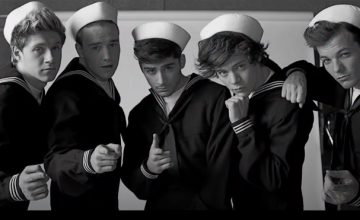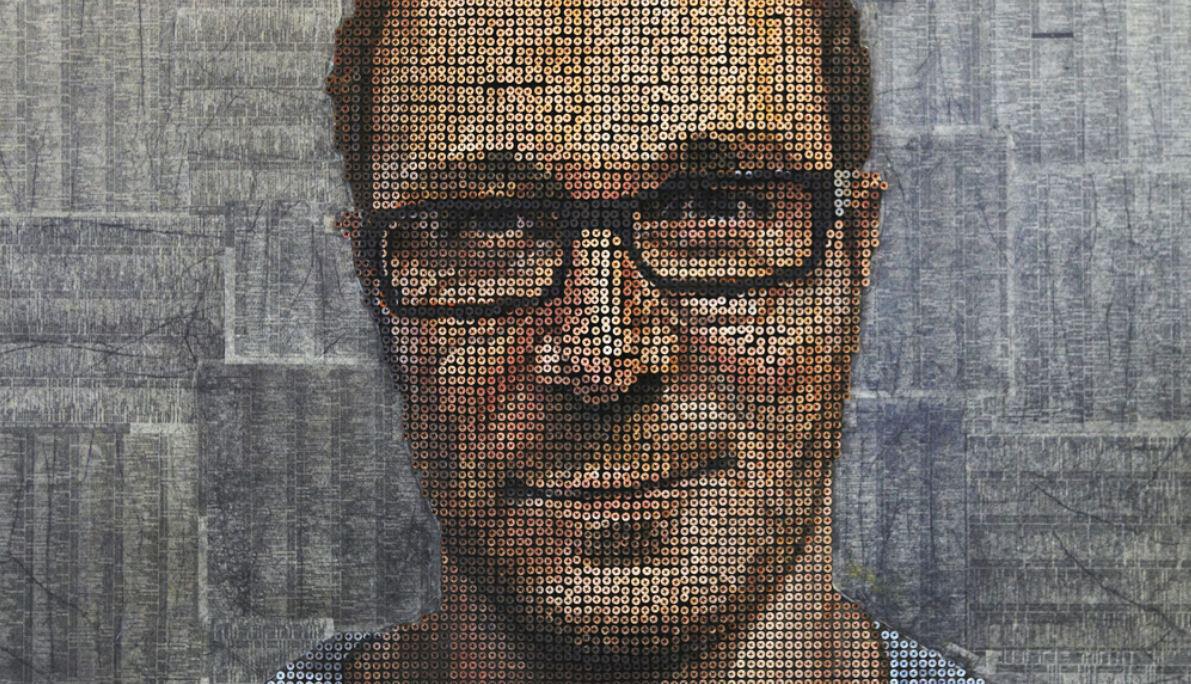There’s a phase that comes in every young rock band’s life, a time when their group is accused of devil worship. Heck, Iron Maiden couldn’t escape it, and even non-rock musicians are in on the conspiracy of the moment (Jay-Z and Beyoncé, anyone?). In this day and age, the accusation probably came from your typical stranger on the internet.
For the indie band Stray Mullets, this is merely something to shrug off and laugh about. Their album art’s aesthetic is founded on an outlandish grit, with monsters stylized straight out of B-movies. It’s colored in bright hues, seemingly counteracting the content. This contrast speaks volumes about the band. “It manifests grit, but it doesn’t try to be too dark,” Ichivan Chan, the group’s bassist, explains. “Because it wouldn’t be funny if you take yourself too seriously.”
Read more: Diving deep into Olongapo’s metalcore through Palepaths’ Maki Dela Cruz
The Stray Mullets consist of Ichivan Chan, Joaquin Negra on guitars, and Johnny Barracuda on lead vocals and drums. Their debut album, Melodies for Maladies, is exactly what the title suggests—a selection of eight tracks that delves into daily melancholies, from personal woes to a rage against society.
“Showtime, Baby” marks their first music video, featuring our Scout friend, Manikween. The band dubs it as a “horror/fashion” film, as Manikween walks around the streets of Metro Manila, later finding herself dancing along to the fast-paced, classic punk-influenced track. It’s infectious in its peculiar energy.
For this week’s SCOUT Friday Picks, we talked to the members of Stray Mullets about Melodies for Maladies, their time with Manikween, and what’s next on their horizon.
Tell me a little bit about Stray Mullets.
JN: Three former sidemen who decided to form a band. No frontman material here. I think that’s the main theme of this band, at least for me.
If you’re going to make a hybrid of bands to describe your sound, who are the bands that you’ll choose?
JN: I’m not sure with the other two but I try to put in my honky tonky Rod Stewart side in the songs.
Ichivan Chan: White Stripes, Primus, Ramones, The Clash, Weezer and QOTSA.
[The album artwork] manifests grit, but it doesn’t try to be too dark. Because it wouldn’t be funny if you take yourself too seriously.
How has your sound evolved from when you started to where it is now?
Ichivan Chan: Initially I was thinking of the same basic bass sound. But I thought that it would be a better idea if I use effects like distortion and an octaver to turn it down a notch. And with a lighter setlist, I will use the upright bass then JN and JB will tone down a bit too. Upon reviewing the songs and playing it repeatedly on jams and gigs, I have changed some bass parts to add taste. Unlike when I was playing it for quite a few times. The recording process was also fun as the ideas were spot on, especially the vocal parts.
JB: I’m not really good at describing “sound” or “genre.” But I think we’re one of the few bands in the local scene that don’t really care about trends, and I think that resonates with our music and overall approach to our creative process as well.
Read more: The Kooks wants to collaborate with IV of Spades
Could you tell us more about your first full-length album Melodies for Maladies?
Ichivan Chan: It took one and a half years to make. We jam at least once a month due to our geographical distances. The song ideas are laid out online. And then we jam the songs with acoustic instruments, then we apply it in a full band setting. It has eight songs. One is a cover from a pioneering local punk band, Private Stock. The instruments in the album were recorded live while vocal tracks were overdubbed.
JB: And most of the tracks are one-takes. Hi Mel!
JN: When we wrote the songs, we didn’t really have a theme for the whole album. But most of the songs are about our everyday blues, “illnesses” in society, relationships and all that other stuff.
JB: Hence, the album title, Melodies For Maladies.
We wanted to make [the music video] look like somewhat of a B-movie. Which I think pretty much fits the whole aesthetic.
From all the tracks in your first full length, why choose “Showtime Baby” for your first music video?
Ichivan Chan: I guess it is because of the hard-hitting sound of the song. It’s not like a Top 40 hit but it sounds pretty in-your-face.
JN: I think the song represents the general sound of the band. It’s jumpy and sounds like it’s in a major key, although I’m not sure. So, it sounds a bit angsty but still positive.
JB: I agree. And also, the song is very engaging—for the band and the audience. Plus, for us, this is the track that we unanimously like.
Read more: Synth-pop artist timothy Run on self-doubt and trying new things
What was the initial idea for the MV?
JN: We wanted a viral macho dancer to be in it, but there were too many other bands jumping in on the bandwagon. Plus, the logistics would be much more difficult. It would have been a bad idea if we pushed through.
JB: I agree. Hehe.
Who came up with the idea to make the MV a horror/fashion film?
JN: I can’t remember. Ask JB.
Ichivan Chan: JB and Keith. We wanted to make it look like somewhat of a B-movie. Which I think pretty much fits the whole aesthetic.
JB: Actually, we just gave Keith some ideas, but he was absolutely in control for the whole music video. Keith Deligero’s work is always a “sure win” for me—that’s why I just let him do what he does best: being Keith.
I’m not really good at describing ‘sound’ or ‘genre.’ But I think we’re one of the few bands in the local scene that don’t really care about trends, and I think that resonates with our music and overall approach to our creative process as well.
How was it working with Manikween for this MV?
Ichivan Chan: It was fun. He/She danced through our gig. It was quite a scene. And way better than the initial idea.
JB: Hehe.
Read more: Meet Manikween: LA Aguinaldo, Charlie Lim, and Nadine Lustre’s Wanderbuddy
With your key album artwork and your MV as well, how would you describe Stray Mullets’ visual language?
Ichivan Chan: It manifests grit, but it doesn’t try to be too dark. Because it wouldn’t be funny if you take yourself too seriously.
JB: Haha, yeah. I remember an article about us and our album from the website of a known TV network, people in the comments section were saying we’re Satanists and whatnot.
JN: Personally, the key is bright colors to attract people visually. Because people these days want eye candy. Hopefully they’ll like the content too.
JB: Siamese Rat really did a great job with the album design. Not to sound braggy, but I honestly think the album art is an instant classic.
What can we expect from you guys next?
JN: More songs and shows.
JB: Southeast Asia gigs plus a sophomore album in the future.
Ichivan Chan: We will be releasing live performances of the songs from the album on a monthly basis starting this August up to summer 2020. These were all pre recorded and engineered at Studio 222 by Ced Concepcion, shot by Kureki Productions and co-produced with Melt Records. Check out our Facebook page for further notice.
Interview by Rogin Losa
Still from “Showtime, Baby”
























Comments